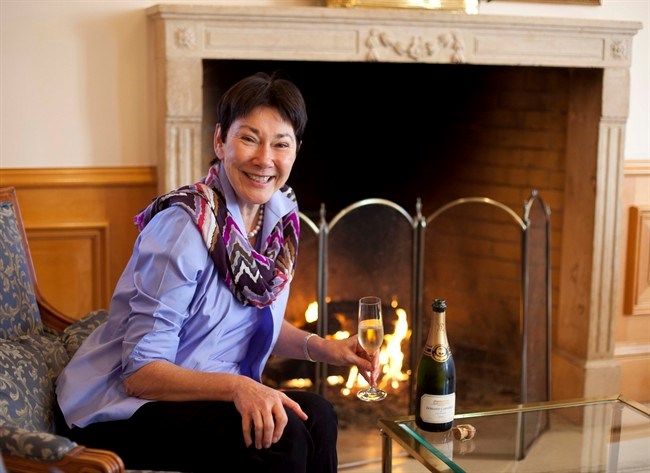Something new is bubbling up in the world of cocktails as canny mixologists skip the soda and turn to sparkling wine as their new go-to mixer.
The practice stems from the added care being given to cocktail ingredients in general. After all, it hardly makes sense to drown the top-shelf hard stuff in something cheap and/or sugary.
"It's not the best thing to be putting club soda or any type of soda in a cocktail," points out Chad Furuta of Del Frisco's Grille in New York.
Furuta traces the emergence of sparkling-wine-as-mixer to the popularity of prosecco, the slightly sweet Italian fizz that pairs well with liquors. "It definitely brought a new aspect to the table and gave bartenders like myself a new outlet to bring out the natural flavours in a cocktail, as well as the celebratory factor."
He recommends using lighter-tasting spirits when using sparkling wine, and also keeping an eye on the overall alcohol level since you don't want to create a booze bomb.
For his signature ginger snap cocktail, Furuta mixes prosecco with Domaine de Canton, a ginger liqueur that's less than 60-proof (compared to the 80-proof of most spirits), using a mix of 3 ounces prosecco, 1 ounce liqueur and 1 ounce fresh sour mix, which he makes with equal parts fresh lemon juice, fresh lime juice and 1 1/2 parts simple syrup (equal parts sugar and water heated until the sugar melts and then cooled).
The liqueur and sour mix is shaken with ice and strained into a chilled martini glass that's had the rim rubbed with a lemon wedge, then dipped in a bowl filled with a mix of cinnamon and sugar. Top it off with the prosecco and lemon garnish and you have a light but zesty drink.
One obvious point that comes up with a sparkling wine mixer: Should you use the good stuff?
Sure, says Eileen Crane, director of winemaking at Domaine Carneros, the Napa Valley producer known for its premium sparklers. Just mix those drinks with a light hand. If you use something good you don't want to overwhelm it, and if you use something bad — "What's the point?" she asks.
So, the classic Champagne cocktail of sparkling wine, sugar, cognac, a dash of Angostura bitters and a twist of lemon, gets redone as sparkling wine with the bitters and the twist of lemon, lime or orange, but no sugar or cognac.
In summer, Crane likes to drink Domaine Carneros Brut Rose with just a sliver of peach in it, which brings out the peach aromas already in the wine. This time of year she adds a teaspoon of pomegranate juice to the Domaine Carneros Brut and floats a few seeds on top for a pretty and festive drink.
Prosecco and brut sparkling wine are good mixers, but you also can be a little bit adventurous and search out different types of bubbles.
Austrian native and chef Eduard Frauneder, co-owner with chef Wolfgang Ban of the Seasonal Restaurant & Weinbar in New York City (and the recently opened The Third Man cocktail bar inspired by the 1949 spy film classic), likes to use sparkling gruner veltliner, made from the white wine grape that is a staple in Austria. Using a sparkling wine for a mixer "makes the flavour come alive," says Frauneder.
For an elegant presentation during your holiday party, he suggests muddling mixed wild berries (gooseberries, raspberries, blueberries) with dry vermouth, straining that and mixing with 1 1/2 ounces of vodka, then topping with gruner in a martini or flute glass. It's a festive take on the vodka soda, without added sugar, and the sparkling wine elevates the drink a bit.
And if you're concerned about what happens if you open a bottle of bubbly and then don't use it all, don't be, says Crane. Sparkling wine stoppers are cheap, readily available in kitchen stores, and do a great job of keeping in the fizz.
Given that there are about five glasses of wine in a bottle, you could come home and have a sparkling wine drink at day's end for a week. "What a nice thing to look forward to when you come home," says Crane.



